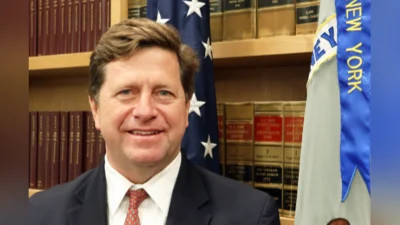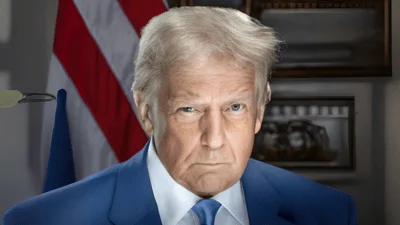EM Principal Deputy Assistant Secretary Todd Shrader emphasized the importance DOE places on input from communities in determining the end state for cleanup sites in remarks to the recent fall meeting of the State and Tribal Government Working Group (STGWG).
Shrader said communication among DOE, state and local governments, and tribes is critical to moving forward with EM’s mission.
“We all have the same shared goal ultimately, and that is the safe cleanup of our sites," Shrader said. “We of course want to do it as soon as possible and as efficiently as possible. So working with stakeholders and working together to do things like define end states and understand where you are going from Day One is critical.
“Probably the number one feedback we can get from stakeholders is what do you want the end state of the site to be," Shrader said.
Mark Gilbertson, EM Associate Principal Deputy Assistant Secretary for Regulatory and Policy Affairs, and Mary Kruger, EM Office of Regulatory, Intergovernmental, and Stakeholder Engagement Director, joined Shrader in underscoring the importance of EM’s engagement with stakeholders. Kruger emphasized the need to continue EM’s dialogue with STGWG.
“Since we have been working together for over three decades, both EM and STGWG have grown up together, helping each other navigate the complex world that is the nuclear weapons cleanup," Gilbertson said. “I value and appreciate the partnership that has grown with time. We are dealing with one of the most sophisticated challenges in history."
STGWG brings together representatives from states and tribes. The working group is focused on three priorities: long-term stewardship, natural resource damage assessment and restoration, and tribal issues related to the cleanup and closure of DOE sites. STGWG provides a forum for communication among states and tribes affected by EM sites and activities.
Shrader noted significant accomplishments in EM’s cleanup mission this past year, including the start of operations of the Salt Waste Processing Facility at the Savannah River Site, continued progress on the Direct-Feed Low-Activity Waste system at the Hanford Site, and advancements in demolition work at the Energy Technology Engineering Center and the Brookhaven National Laboratory.
Shrader noted in particular the progress of the Long-Term Stewardship Working Group. That group is a cross-program team established by EM, the DOE Office of Legacy Management, and the National Nuclear Security Administration to address national and cross-cutting site-level long-term stewardship activities and issues.
“We have a real chance to continue a lot of good momentum here," Shrader said.
The coming year expects to see the initiation of tank waste treatment at the Integrated Waste Treatment Unit at the Idaho Site, and continuing progress at Hanford that will soon lead to the treatment of tank waste there as well.
“Those are really big achievements and really moves us down the line to addressing our needs across the complex," he said.
Source: U.S. Dept. of Energy, Office of Environmental Management









